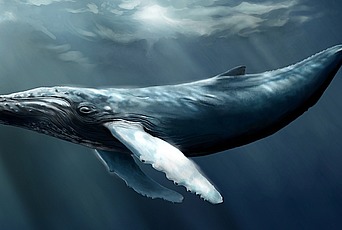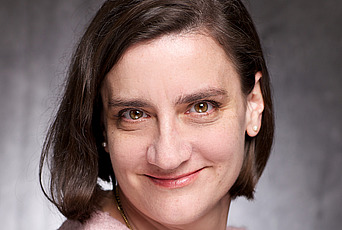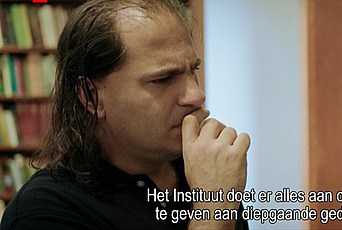From Bewilderment to Clarity
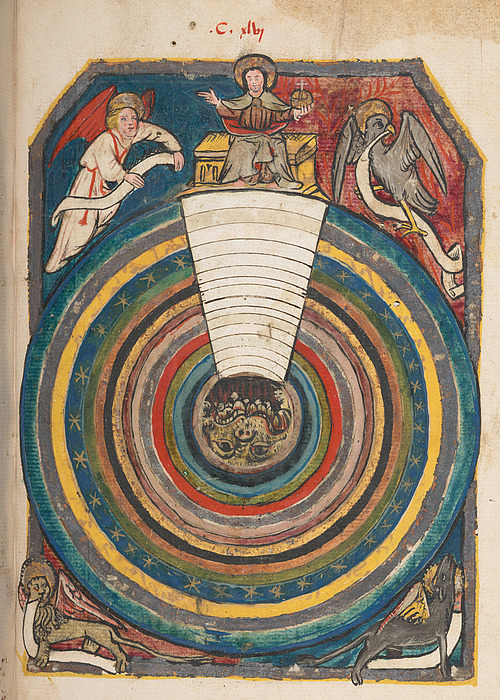
To be bewildered is, literally, to be lost in the woods. Not lost in the beautiful and well-marked paths that wind through the Institute forest but trapped and disoriented in a dangerous place with the fear that you might never escape. The fourteenth-century poet Dante describes such a space in the opening lines of his Commedia, and the feeling of terror he experienced when “the right way was lost.” Metaphorically, to be bewildered is to be adrift mentally, having lost your bearings and being in a state of confusion.
Yet the state of bewilderment is also fundamental to the search for insight. It is a necessary first step in the effort to get to a point of greater clarity and to see the right way even when—especially when—it seems to be lost. Popular accounts of mathematicians and scientists feature moments when a seemingly intractable problem gives way to an “aha! moment,” the sudden realization that (in hindsight) appears to be obvious. One famous example concerns the organic chemist August Kekulé, who in the mid-nineteenth century discovered the ring structure of the benzene molecule: Kekulé stated that he had had a dream in which a snake was eating its own tail and, upon waking up, realized in a flash the circular shape of the molecule. Long hours of thinking, studying, and puzzling—of bewilderment—are the necessary precursor to this abrupt moment of insight.
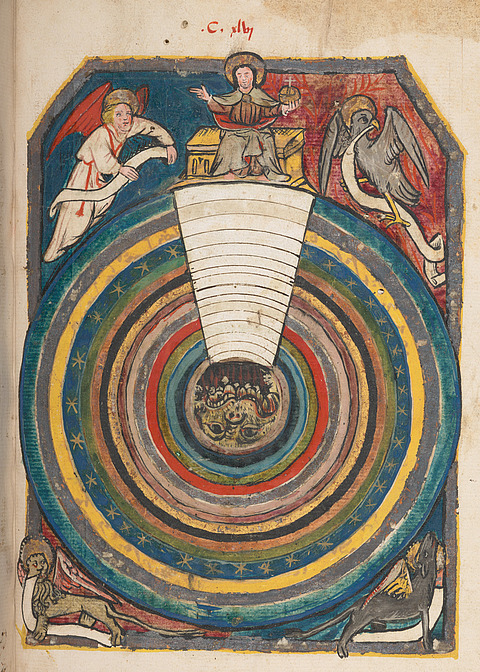
For humanists, the experience of bewilderment—and the sudden flash of clarity that sometimes follows—plays out in a different way. To provide a sense of this movement from bewilderment to clarity, let me describe the illustration shown here, taken from a manuscript of a thirteenth-century encyclopedia, Gossuin de Metz’s Image du Monde (London, British Library Royal MS 19.A.IX, fol. 149r). This is a picture of everything: it shows an image of the cosmos, with the Earth at its center and the gaping mouth of hell nestled within it. The circular form of the planetary sphere is surrounded by the four elemental spheres of earth (black), water (blue), air (golden), and fire (red), which are in turn encircled by the seven planetary spheres, followed by the sphere of the fixed stars, the empyrean sphere, and the realms of the celestial heavens. It is fair to say that the image is bewildering, even for someone who knows a fair amount about medieval visions of the cosmos and who can recognize the elemental and celestial spheres that those many-hued circles represent. But more questions remain: What are these figures at the corners? Why is the central slice, so to speak, of the spheres cut through and painted white? What does each circle represent? It would be possible to write paragraph upon paragraph explicating the four evangelists at the corners, the symmetries and variations in the spherical system, and the figure of Christ at the top, seated on a sepulchre-like throne and holding in his hand a round sphere or orb. That orb is a symbol of power, but it is also a microcosm or little world that represents in miniature the entire cosmos that is also depicted on the page before us.
In other words, the clarity that emerges from the initial state of bewilderment upon seeing this image does not arise simply from a knowledge of the historical context that lies behind the image. It also comes from reflecting on the image’s various parts, imagining how they fit together, realizing—with a jolt—that the object in the left hand of Christ is also the entire scope of the cosmos depicted here. When I think back to my own experience as a researcher in historical fields, interested in the literature, art, philosophy, theology, and science of the Middle Ages, and I try to identify the “aha! moments” in my own intellectual trajectory, two examples stand out, each of them associated with a major research project and subsequent book. Early on, when I was working on the history of optics, I was trying to understand how medieval writers might have understood phenomena of refraction such as the rainbow, or the spectrum of colors produced by a prism. Thinking about reflection and refraction (as these were theorized by twelfth-century science), I sat in a coffee shop twisting around and around the ring on my finger. Looking at it intently, so that my sight went in and out of focus, I could see that the stone both reflected images of things around it and also refracted light in a burst of the spectrum. This was (I suddenly realized) the same simultaneous reflected and refracted vision that was being described in some obscure and technical passages on vision that I was studying in the thirteenth-century Roman de la Rose. This experience happened over thirty years ago, in the spring of 1989, but I can still see that ring in my mind’s eye and remember vividly the flash of pleasure that came with that moment of insight.
Having had that first experience of bewilderment giving way to clarity, I recognized it immediately when it came a second time. I was well into the research project that became my second monograph, on medieval depictions of Islam and the Orient, but I had been having a hard time seeing how the work as a whole might be conceptually organized. I knew that depictions of Muslims as polytheistic idolaters, who were alien in terms of their belief system, was one vector of the project, but I also knew that it would be necessary to take stock of how medieval writers accounted for the range of bodily diversity in terms of climate—that is, how they conceived of anatomical and physiological differences in ways that would ultimately lead to a racialized sense of the Orient. It was unclear to me how I might bring these vectors of the project together, though I knew that they were related. Walking to meet a friend one afternoon—I can remember exactly where I stood on the sidewalk, and remember the level of the sun in the sky—I suddenly saw how to organize the two halves of the book about the twinned and related concepts of orientation and Orientalism, putting spatial relations at the center of the analysis whether alterity was grounded on religious orientation or on Oriental identity. I stopped in mid-step, pulled a pencil out and scrawled a diagram of the chapter headings for the whole book, standing on the sidewalk that late afternoon.
These “aha! moments” are, in some ways, very different from those experienced by the mathematicians and scientists with whom I began. For humanists, the goal is rarely to solve a puzzle or establish an irrefutable proof: instead, the goal is to formulate a line of questioning, or to establish a structure within which to consider a set of problems or a discursive formation, in order to shift the terms of the field in a way that opens up new areas to be explored. The very best scholars in the humanities do exactly this: they open up new spaces for investigation. Yet even though there is a gap between the “aha! moments” of mathematicians and scientists, on the one hand, and those of humanists, on the other, it is also a fact that my own earliest intellectual formation came in the world of numbers. Perhaps that’s why I tend to see “aha! moments” as bridging the gap between mathematics, sciences, and humanities.
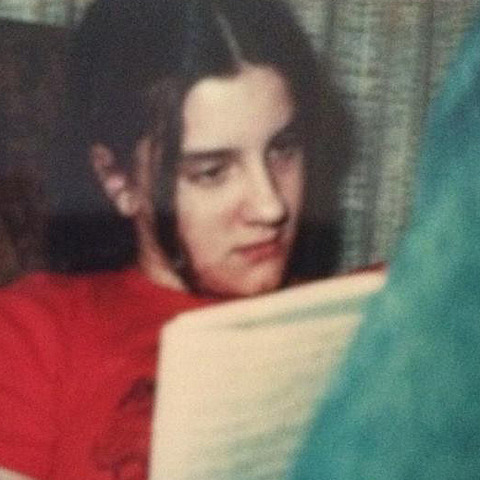
As a child, I loved to read. I was unhappy in school, though, probably because our small town didn’t have a very challenging school system. That world changed dramatically when, in fifth grade, we were given “Spectrum” math books. These books—so named because they started at the basic level (with a red cover) and moved up, level by level, through orange, yellow, green, blue, and purple—were a life saver. You could work at your own speed during math period, and if you finished your other work early in another period, you could pick up the “Spectrum” books and continue to work on your own. I went through four of those books—orange, yellow, green, blue—in fifth grade. In sixth grade, I finished purple and then math class became very boring indeed. It was the same in seventh grade. I skipped eighth grade, and ninth grade was a little better, but not much. I was still very bored. Then one day in the spring I read in the New York Times that there was a new program beginning at Johns Hopkins, called the “Program for Verbally Gifted Youth” (PVGY), a new counter-part to an existing longitudinal “Study of Mathematically Precocious Youth” (SMPY). After a couple of phone calls, and after talking my mother into driving me to Baltimore, I was at the Ames Building taking the SAT Verbal section, to see if I could place into the PVGY program. The postdoc who gave me the test suggested that I take the math portion too, just to see what the score was like. I placed into both programs and spent the summer I turned fourteen living in Baltimore, in my uncle’s spare bedroom, and taking the bus into the Hopkins campus.
That summer was transformative. I had never been so happy. There was a limitless space, it seemed, for growth and for thinking. In some ways, it was like paradise. In some ways, it was also dangerous: bewilderment, without the hope of escape, lurked in the background. My summer was wonderful, but I was aware that it was not that way for every student in the program. At thirteen going on fourteen, I was one of the oldest, and one of only a few girls in the math study that year. Most of the other students were twelve, and I remember one eleven-year-old named Aaron who sat behind me. We were working at our desks when I heard the sound of sobbing behind me. He was struggling with a problem, in tears, saying over and over, “I just can’t get it.” I encouraged him, and one of the older teenaged boys who were our mentors came over to help, but the moment stuck with me. The sense of freedom that summer was always accompanied by the sense of possible danger, just as the feelings of bewilderment were swept away by the moments of shining clarity. Solving a difficult problem brought with it an intoxicating surge of pleasure.
In joining IAS, one of the most curious features, for me, is being once again in the company of mathematicians and scientists in a way that I have not been since I was fourteen years old. In the university setting, even though we have colleagues across the disciplines, spanning mathematics, sciences, and humanities, we are all in our own little boxes, separated by our curricula and our research programs. At the Institute, while each School certainly has its own character and researchers’ work is highly specialized, there is nonetheless a sense of common purpose and shared environment. We inhabit the same space—the same woods—and not just in the literal sense. We share the experience of bewilderment, and the perpetual yearning for clarity.
